|
|
|||
|
Forgotten Temples of Kashmir
Photo series Part-3 An effort to preserve and record Hindu cultural and religios heritage of Kashmir THAJIWARA - CHOTA AMARNATH  Exclusive images and report from a remote village in Kashmir provided for Shehjar by Chander M. Bhat |
|||
|
“Shiva,
the third god of the Hindu Trinity, is generally worshipped in the
anconic form of the linga. Literally, Shiva means auspiciousness and
linga means an emblem. Hence Shiva Linga means and emblem of
auspiciousness.”
[A Concise Encyclopaedia of Hinduism, Volume 3 by Swami Harshananda] It was 11th October 2009, I visited the temple, Sh. Jagan Nath Bhat of village Logripura [Pahalgam] accompanied me. We reached Thajiwara at about 1030 hours. Shiva Temple of Thajiwara is situated atop a small hill lock on the left side of the road dates its history back to Kayshup period. One has to climb a steep to reach the main temple. 32 kanal of land are attached with this temple. The steps leading to the temple count 48. There are two natural caves in the complex of this temple. A small spring oozing its fresh and cold water in one of the caves forms the main sanctum sanitarium with three feet Shiva Lingam submerged in water. Pearl like water drops oozing from the roof of the cave are falling on Shiva Lingam. This cave is facing towards east. Wild grass has grown on the face of the cave and I was told that this grass remains green throughout the year. Another cave though deep in size of the first cave forms the reservoir of the sacred water coming out of first cave. This water was then taken by pipes to the main spring at the bottom of the hill lock for the holy dip of the pilgrims. The land of saplings “Thajiwara” attracts people for darshan of Lord Shiva on Sharvan Purnima. This pilgrimage centre came into being after Lord Shiva on his way to the Holy Cave of Amarnath stay for
Shri Roshan Lal Dhar, whose house is situated at the bottom of the hill lock, told me that the shrine was desecrated on 20.09.1990 and all the dharamshalas were set on fire including the main temple. However the Shiva Lingam was not touched as it was submerged in water in a cave. This temple was re-opened on Tuesday 30.08.2007 for the first time after 18 years of turmoil. Thousands of displaced Kashmiri Pandits especially from village Thajiwara and Batgund (Larigal) arrived here from Jammu and offered prayers at the holy cave temple. This temple was renovated by the State Govt. with a semi circular tin sheet as a roof, open from all sides. The surrounding area which was once full with natural habitat is now looking deserted. Besides the main temple there were four dharamshalas, one Shivaliya, one rest room and four bathrooms bath rooms but the religious zealots raised them down and left no remains of real legacy. |
|||
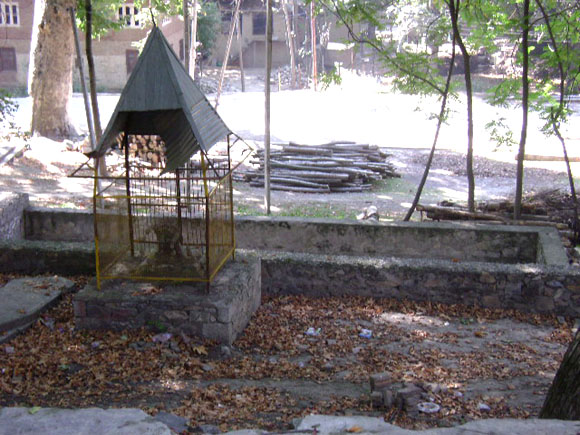 Shiva temple near a spring but alas the shiv lingam is missing and sprined has dried up. |
|||
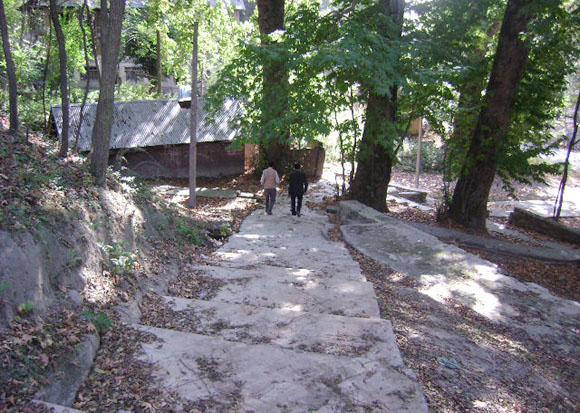 Steps leading to the Shrine |
|||
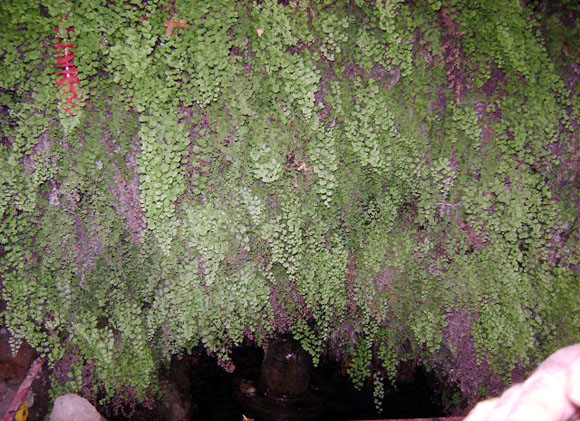 Main Cave |
|||
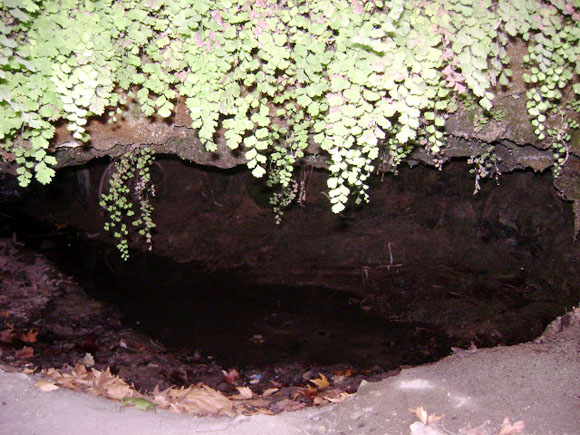 View of another cave |
|||
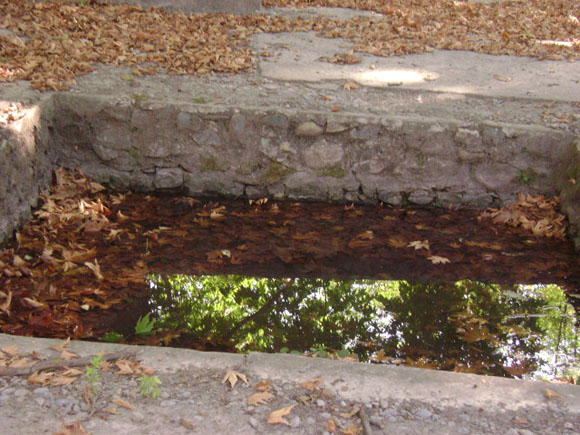 View of another spring |
|||
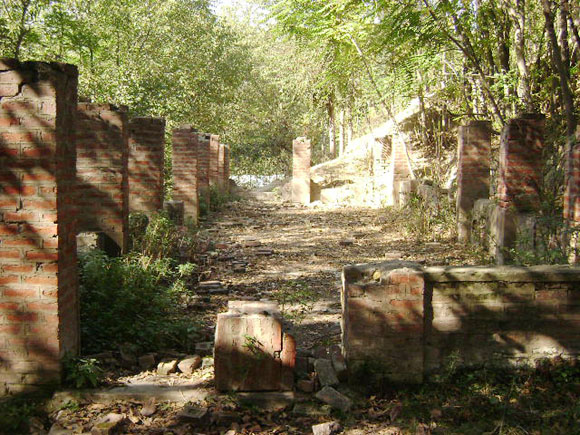 Close view of the dharamshalas |
|||
 Temple Complex view from the the top |
|||
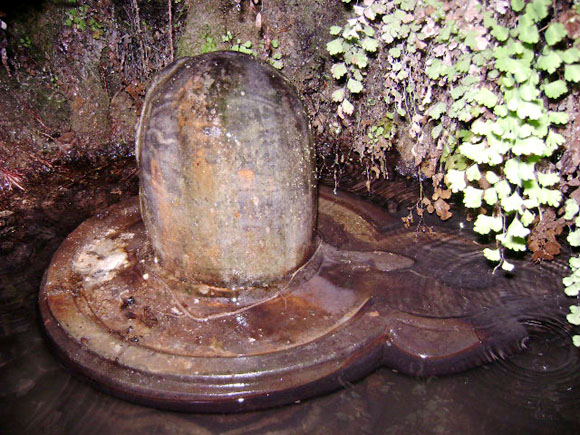 Close up of the Shiv Lingam |
|||
 View of the guted dharamshalas |
|||
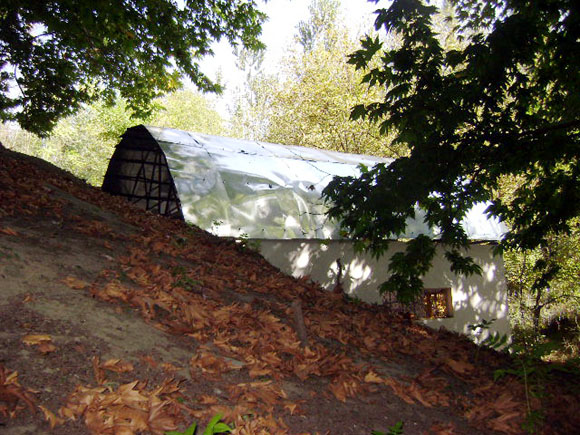 Newly Built temple by the State Government |
|||
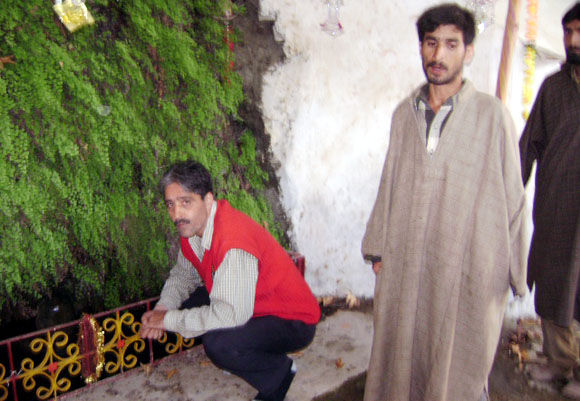 Author alongwith the Chowkidar in front of the cave |
|||
|
|
|||
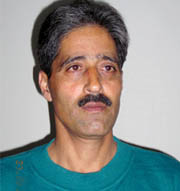 *Born
on 20th March, 1960 in Murran a village in North Kashmir, Chander M.
Bhat is presently working as an Assistant Supdt. Posts, in Department of
Posts, Govt. of India. His articles regarding Posts and of
non-political nature stand widely published in various papers and
magazines of the country. A booklet 'How to Collect Stamps" published by
the Department of Posts, has earned him genuine accolades. He worked on
the project of tracing the roots of his co-villagers and of the village
Murran, resulting into the culmination of a widely acclaimed book
"Murran -My Village". Man with depth, Chander M. Bhat has also another
book, "Ocean by Drops" (collection of poems) in his vase having colorful
poems. His book "Ancient History of Jammu and Kashmir", confirms his
researching capability. Various research papers like "The Splendor that
is Amarnath" and "Vitasta" The Sacred River of Kashmir" are valuable
additions to his works that has proved very fruitful and guiding force
in the exile period of Kashmiri Pandits community of which the author is
also a member. *Born
on 20th March, 1960 in Murran a village in North Kashmir, Chander M.
Bhat is presently working as an Assistant Supdt. Posts, in Department of
Posts, Govt. of India. His articles regarding Posts and of
non-political nature stand widely published in various papers and
magazines of the country. A booklet 'How to Collect Stamps" published by
the Department of Posts, has earned him genuine accolades. He worked on
the project of tracing the roots of his co-villagers and of the village
Murran, resulting into the culmination of a widely acclaimed book
"Murran -My Village". Man with depth, Chander M. Bhat has also another
book, "Ocean by Drops" (collection of poems) in his vase having colorful
poems. His book "Ancient History of Jammu and Kashmir", confirms his
researching capability. Various research papers like "The Splendor that
is Amarnath" and "Vitasta" The Sacred River of Kashmir" are valuable
additions to his works that has proved very fruitful and guiding force
in the exile period of Kashmiri Pandits community of which the author is
also a member.Presently the author is working on "OOL - THE NEST" a six volume project on all the 595 (each volume of about 2500 pages)Kashmiri Pandit villages of Kashmir.. POSTED BY............................VIPUL KOUL VIPUL KOUL | |||
Wednesday, October 10, 2012
Forgotten Temples of Kashmir Photo series Part-3
Subscribe to:
Post Comments (Atom)



No comments:
Post a Comment